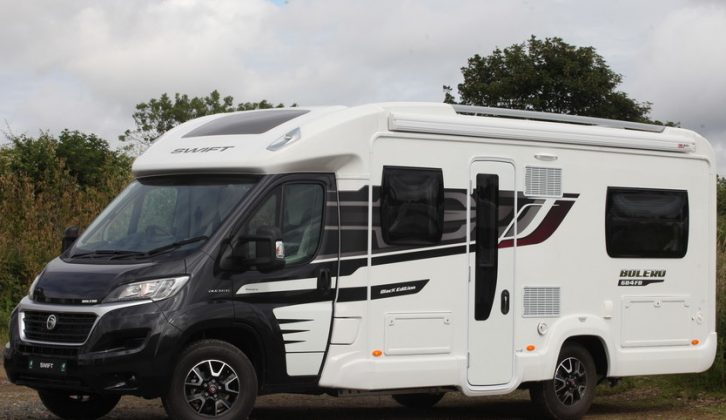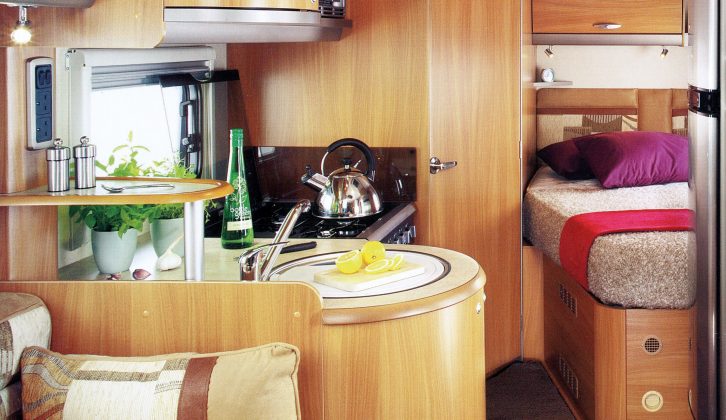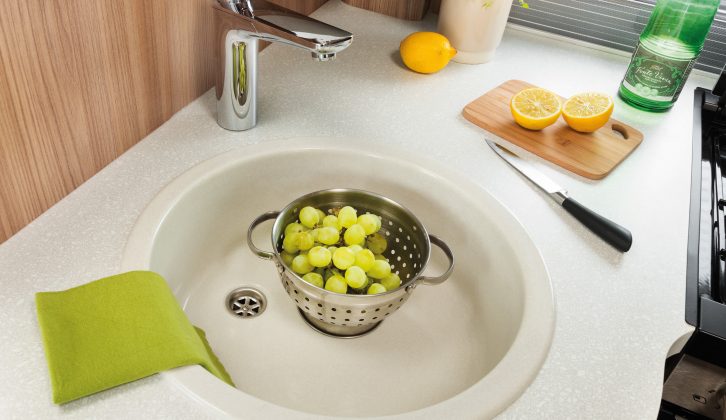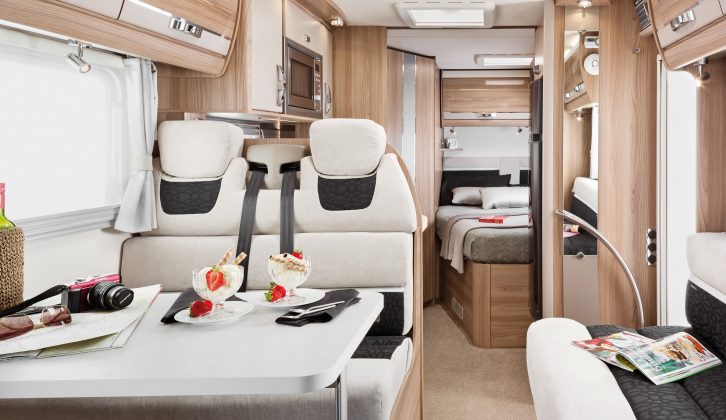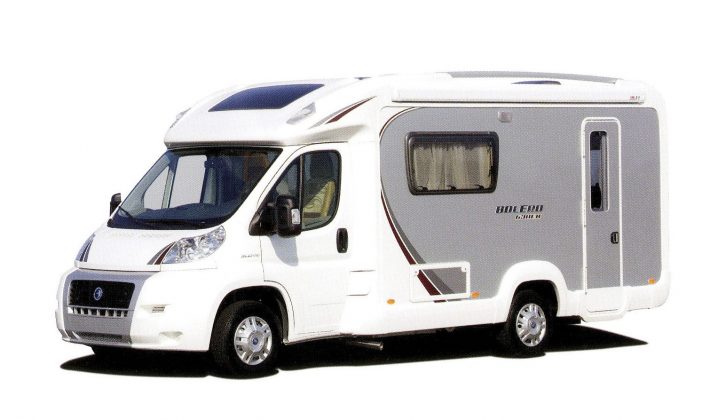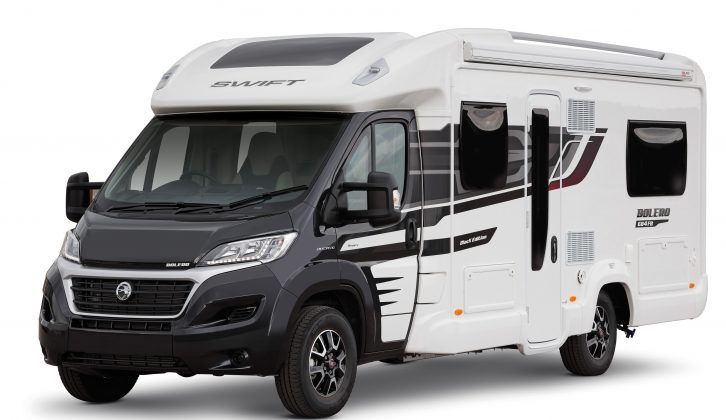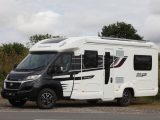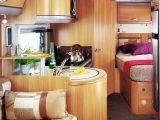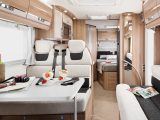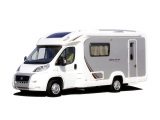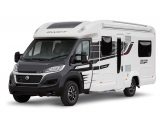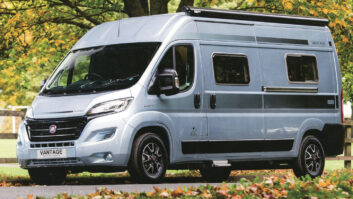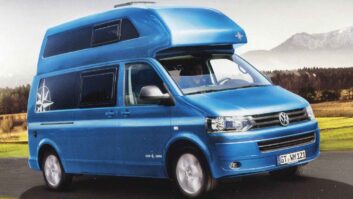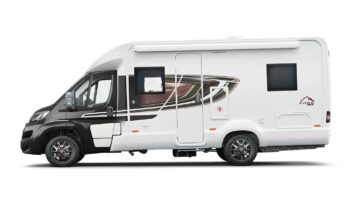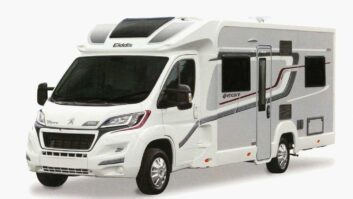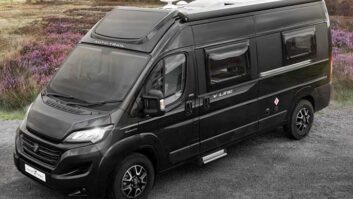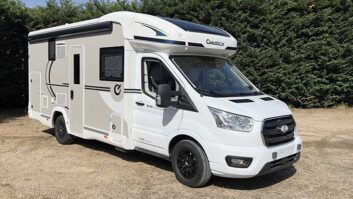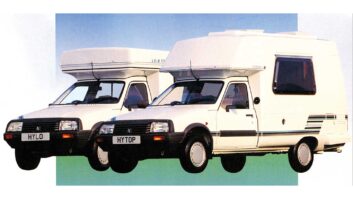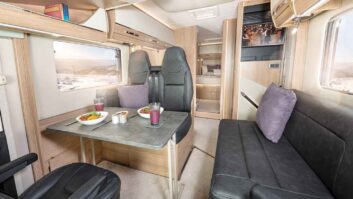It’s hard to believe that Swift Group’s super-streamlined Bolero motorhome has been with us ever since 2007. Its base, the stunning Fiat Ducato X250, was launched in time for 2007. While many rival motorhome manufacturers just plonked outgoing ranges on the new chassis, Swift stole a march on them and presented eight new ones. Some of those ranges have fallen by the wayside since, but the Bolero’s appeal just keeps growing.
Not only is the Bolero fabulously well-equipped at any cost – and even more so at their asking prices – it also ‘looks the part’ and then some.
First off the blocks was the 7.04m/23ft 1in Swift Bolero 680FB, which included a fixed longitudinal European-style, low-level, corner double-bed. It was powered by a 2.3-litre 130bhp motor.
In response to customer demand, an automatic version was introduced, with a 3.0-litre 160bhp. Unfortunately, with no chassis upgrade available, the payload on the range-topper was a measly 283kg.
The 2010 model year brought more fixed-bed models and the range grew to five Bolero motorhomes for 2011.
Swift then swapped the white cab/silver-grey sides for a silver-grey cab and white sides. The popular Bolero 680FB was renumbered Bolero 682FB (to signify two berths and two travel seats).
The 684FB added a half-dinette plus two more travel seats and a further double-bed in the lounge. Standard chassis for Bolero 684FB was now 3700kg.
All the 7-series stretched the tape to 7.7m/25ft 3in and included a full-width changing room with walk-in shower cubicle, toilet, vanity basin and lots of room across the end.
The Bolero 712SB featured fixed twin beds, while the Bolero 722FB boasted a nearside fixed double, and the Bolero 724FB had four berths and four travel seats. All 7-series Boleros run on the 4250kg chassis and they all have desirable Alde central heating as standard kit.
2015 Swift Bolero models included the upgraded (now black) cab, contemporary high-gloss Aralie Sen cabinet work and sumptuous Edison soft-furnishing fabrics. You can view Editor Niall Hampton’s 2015 Swift Bolero video review here.
New Swift motorhomes for 2016 included the Bolero with an exterior that had gained a solar panel, diamond-cut alloy wheels and mountings for a Thule bike rack or box.
If we had to pick a USP for this popular and long-lived range, it would be that Swift has stuck to its original intention of using the low-line, fully galvanised, independently-sprung Al-Ko chassis for all Bolero models – which is why they drive so well.
What to look out for
First of all, when it comes to the Bolero’s base vehicle, they were built on the early X250 2.3-litre Ducatos, which were recalled for a rain cover to be fitted to the engine and for a series of upgrades to ameliorate a tendency to judder when reversing up steep hills. Ensure that all such recalls have been carried out.
It is powered by the 160/180bhp unit, which is a tough Iveco-derived engine. ComfortMatic is a well-received automated gearbox (two-pedal drive). Test it out to be sure that gear changes and initial take-off are swiftly achieved. If not, walk away.
Some Bolero motorhomes have mighty long rear overhangs, so make sure there is no damage to the rear skirt. Long rear overhangs can result in a risk of grounding when you drive over bumps and ferry ramps.
As with any coachbuilt motorhome, the Bolero’s big enemy is water ingress. Use your eyes, nose and a professional quality damp meter to check for this.
Later models use Swift’s Smart construction, which employs less timber in the body construction than in conventionally built ’vans. This is meant to eliminate the incidence of water ingress and the resulting damage.
Likes and dislikes
So, to summarise, what do we like and dislike about the 2007-2016 Swift Bolero motorhomes?
Likes
- Al-Ko underpinnings
- Low-profile overcab moulding
- Contemporary interiors
- High level of standard equipment for price point
Dislikes
- Barely adequate payload on some 3500kg chassis
- Long rear overhang with shallow departure angle on some models
Buying essentials
The Swift Bolero was a low-profile overcab coachbuilt motorhome, built on the Fiat Ducato Al-Ko Kober low-line chassis from 2007 in Hull, Yorkshire.
The Boleros came in several overall external lengths, with the Bolero 680FB, the 682FB and 684FB being 7.04m (23’1”) long, and the Bolero 712FB, the 722FB and 724FB having an external (shipping) length of 7.7m (25’3”).
Which would we choose? Anyone with a car licence can drive the Swift Bolero 680FB and Bolero 682FB, so this makes its appeal universal. These have been the best-sellers, so there are more pre-owned to choose from.
For buyers who have a category C1 licence, the Swift Bolero 724FB ComfortMatic would be our model of choice.
How much should you expect to pay for a Swift Bolero? As a guide, quite a few early Bolero 680FB models are at dealers for around £30,000-£32,000. Sterling Car Sales (Essex) has one that’s covered just 28,000 miles and it includes a Smart ForFour car. Browse through the Practical Motorhome classified adverts to see more Swift Bolero motorhomes for sale.
Alternatively you could consider buying the Bessacarr E500 series and Ace Airstream motorhomes. These were made at the same factory but they do have different trim and furnishings. You can browse for used Bessacarr motorhomes for sale here, used Swift motorhomes here and the rarer used Ace motorhomes here to get a range of prices before visiting motorhome dealerships and taking some test drives.
Not only is the Bolero fabulously well-equipped – it also ‘looks the part’ and then some
